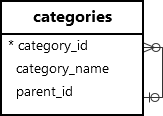Summary: in this tutorial, you’ll learn how to use the PostgreSQL LEFT() function to return the first n characters in a string.
Introduction to the PostgreSQL LEFT Function #
In PostgreSQL, the LEFT() function allows you to extract the first n characters from a string.
Here’s the basic syntax of the LEFT function:
LEFT(string, n)Code language: PostgreSQL SQL dialect and PL/pgSQL (pgsql)The LEFT() function accepts two parameters:
string: The input string from which you want to extract characters.n: The number of characters you want to extract from the input string. Ifnis negative, theLEFT()function returns all characters but the last|n|characters.
|n| is the absolute value of n. For example if n is -5, the |n| will be 5.
The LEFT() function returns a string containing first n characters of the input string. It returns NULL if the string or the n is NULL.
Basic PostgreSQL LEFT function examples #
The following query uses the LEFT() function to return the first two characters from the string "pgtutorial.com":
SELECT
LEFT('pgtutorial.com', 2) result;Code language: PostgreSQL SQL dialect and PL/pgSQL (pgsql)Output:
result
--------
pgCode language: PostgreSQL SQL dialect and PL/pgSQL (pgsql)The following query uses the LEFT() function with a negative n (-4) to return all characters of the string "pgtutorial.com" except the last four characters:
SELECT
LEFT('pgtutorial.com', -4) result;Code language: PostgreSQL SQL dialect and PL/pgSQL (pgsql)Output:
result
------------
pgtutorialCode language: PostgreSQL SQL dialect and PL/pgSQL (pgsql)The following query uses the LEFT() function with the NULL input string:
SELECT
LEFT(NULL, -1) result;Code language: PostgreSQL SQL dialect and PL/pgSQL (pgsql)Output:
result
--------
NULLCode language: PostgreSQL SQL dialect and PL/pgSQL (pgsql)Using the PostgreSQL LEFT function with table data #
We’ll use the categories table from the inventory database:

The following statement uses the LEFT() function to return the first letters of category names:
SELECT
category_name,
LEFT(category_name, 1) AS initial
FROM
categories
ORDER BY
category_name;Code language: PostgreSQL SQL dialect and PL/pgSQL (pgsql)Output:
category_name | initial
--------------------+---------
Accessories | A
Audio Systems | A
Computers | C
Desktops | D
Electronics | E
Home Entertainment | H
Laptops | L
Mobile Devices | M
Smartphones | S
Tablets | T
Televisions | T
Wearables | WCode language: PostgreSQL SQL dialect and PL/pgSQL (pgsql)Using the LEFT function to filter data #
The following query uses the LEFT() function in the WHERE clause to find categories with the first character A:
SELECT
category_name
FROM
categories
WHERE
LEFT(category_name, 1) = 'A';Code language: PostgreSQL SQL dialect and PL/pgSQL (pgsql)Output:
category_name
---------------
Accessories
Audio SystemsCode language: PostgreSQL SQL dialect and PL/pgSQL (pgsql)Using the LEFT function with an aggregate function #
The following query uses the LEFT() function with the COUNT aggregate function to group categories by their initials:
SELECT
LEFT(category_name, 1) AS initial,
COUNT(category_name)
FROM
categories
GROUP BY
LEFT(category_name, 1)
ORDER BY
initial;Code language: PostgreSQL SQL dialect and PL/pgSQL (pgsql)Output:
initial | count
---------+-------
A | 2
C | 1
D | 1
E | 1
H | 1
L | 1
M | 1
S | 1
T | 2
W | 1Code language: PostgreSQL SQL dialect and PL/pgSQL (pgsql)The query returns the first letter of each category and the number of categories for each letter.
Summary #
- Use the
LEFT()function to extract the firstncharacter from a string.